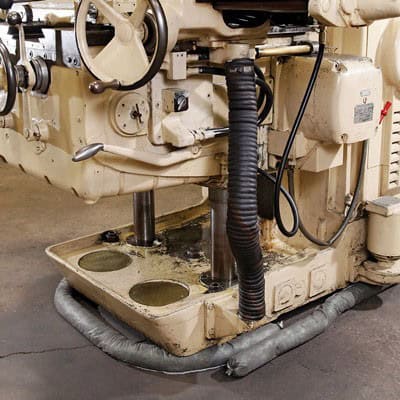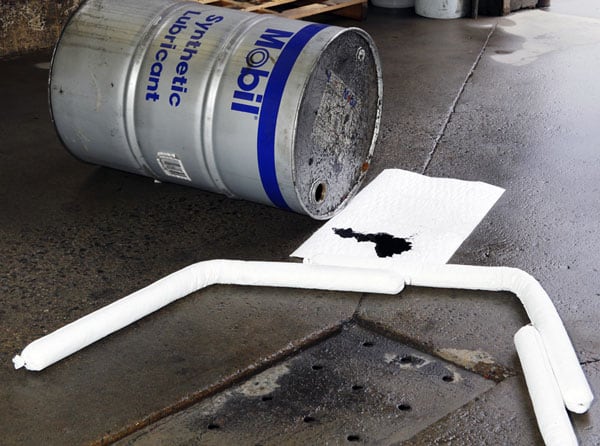Handling liquid spills quickly and efficiently is critical to maintaining safety and minimizing damage in workplaces, industrial sites, and other environments. One of the most common tools used in spill response is the absorbent sock, flexible, tubular products designed to contain and soak up liquids before they spread further.
But knowing when to replace absorbent socks during spill cleanup is just as important as having them on hand. Using saturated or compromised absorbents can reduce effectiveness, increase safety risks, and raise cleanup costs.
In this guide, we’ll break down the key signs and best practices for replacing absorbent socks, so you can keep your spill response efficient, safe, and compliant.
What Are Absorbent Socks?
Absorbent socks are long, tube-shaped materials filled with absorbent fibers like polypropylene or cellulose. They’re designed to be placed around spills to block and soak up liquids, preventing them from spreading. You’ll find absorbent socks widely used in industrial settings, warehouses, maintenance areas, and anywhere liquid leaks or spills might occur.
They work by creating a barrier around the spill perimeter, allowing easy containment and cleanup. However, these socks have a limited absorption capacity. Once saturated, they stop absorbing and must be replaced promptly.

Why Timing Matters: The Role of Replacement in Spill Response
Waiting too long to replace absorbent socks can cause multiple problems:
- Reduced Absorption Efficiency: Saturated socks cannot absorb more liquid, letting spills spread.
- Safety Hazards: Overflowing or leaking absorbents create slip risks or hazardous conditions, especially with chemical or oil spills.
- Environmental Risks: Improper containment can lead to contamination of floors, drains, or soil, resulting in regulatory penalties.
- Increased Cleanup Costs: Delayed replacement means larger affected areas, requiring more materials and labor.
Therefore, understanding the right time to replace absorbent socks is vital to keep spill response safe and cost-effective.
When Should You Replace Absorbent Socks?
Here are the key indicators and guidelines for when to replace your absorbent socks:
1. When Socks Are Fully Saturated
The most obvious sign is saturation, when the sock feels heavy, dripping, or no longer absorbs liquids efficiently. Different socks have different capacities, often listed by weight or volume absorbed. For example, a typical polypropylene sock might absorb up to 2 gallons of liquid before replacement.
2. When Socks Are Damaged or Compromised
If the sock’s outer casing tears or breaks, its absorbent material can spill out, reducing effectiveness and creating messes. Always inspect socks regularly during spill response.
3. After Containing Hazardous Materials
Absorbent socks used with hazardous or chemical spills generally must be replaced immediately after use due to contamination risks. Follow your site’s hazardous waste protocols.
4. When Socks Are No Longer Effectively Containing the Spill
If you notice the spill escaping around or through the socks, or pooling beyond the barrier, it’s time for fresh socks.
5. Based on Time and Spill Volume
For large or ongoing leaks, replace socks periodically even if not fully saturated to maintain containment. For example, replace every few hours during continuous leaks or when socks near capacity.

Best Practices for Managing Absorbent Socks
- Inspect Regularly: During cleanup, visually and physically check absorbent socks frequently.
- Use Appropriate Socks for Your Spill: Oil-only socks absorb hydrocarbons but repel water; universal socks absorb water-based and oils. Choose based on spill type.
- Have Enough Stock on Hand: Always keep spare socks ready to replace saturated ones immediately.
- Follow Disposal Guidelines: Saturated socks, especially with hazardous liquids, must be disposed of per local regulations.
- Train Staff: Ensure workers know how to identify when socks need replacing and handle used absorbents safely.
Why Buy Absorbent Socks from Absorbents Online?
When you need reliable absorbent socks for your spill response, quality and availability matter. Absorbents Online offers a wide selection of socks tailored to different spill types and environments, including:
- Oil-only socks for hydrocarbon spills
- Universal socks for all-purpose use
- High-absorbency socks for large industrial spills
- Custom sizes and quantities for any need
Plus, our team provides expert advice to help you choose the best products and plan your spill containment strategy.
Conclusion
Absorbent socks are a vital part of any spill response kit, but their effectiveness hinges on timely replacement. By knowing the signs of saturation, damage, and reduced containment, you can ensure your spill cleanup stays safe, efficient, and environmentally responsible.
Don’t wait until a spill gets out of control, stock up on quality absorbent socks and other spill containment solutions today.
Ready to upgrade your spill response kit? Shop absorbent socks and more at Absorbents Online for fast shipping and expert support!